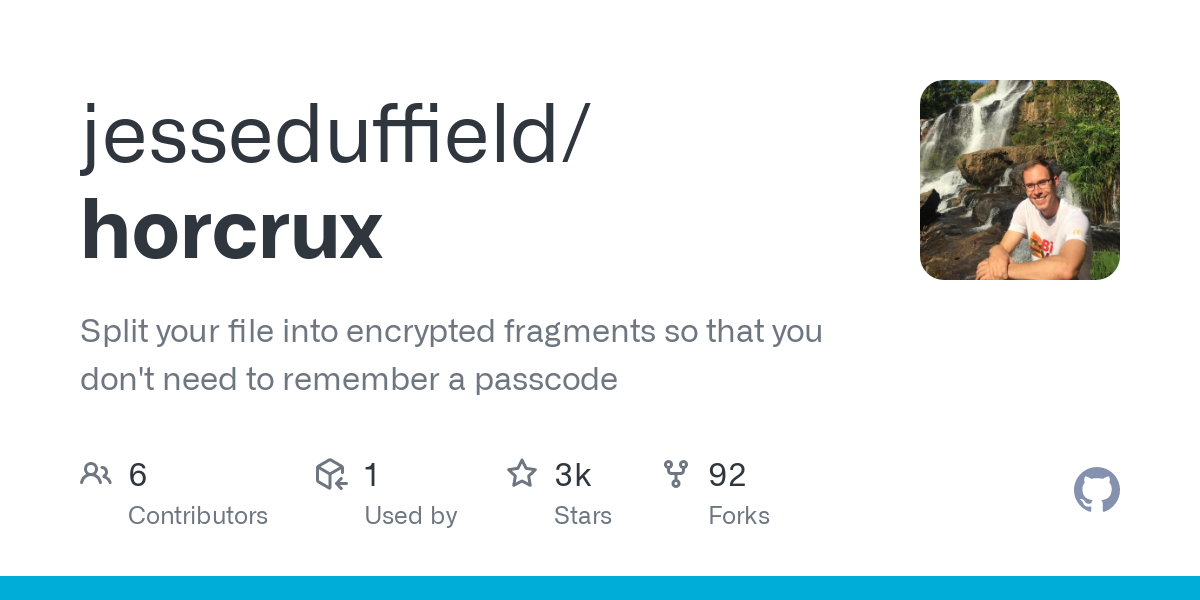Saw this posted over here: https://sh.itjust.works/post/163355
sounds like a really fun concept that should be shared here too :D
I’ve always liked this, it has pretty much everything you could want in a personal project: a catchy name and a whimsical idea that is just on the edge of being actually practical.
Yeah, there is something oddly mesmerizing about projects that solve an “already-solved-in-a-more-efficient-way” problem in a weird way
I really like the name
This basically just means the files themselves become the authentication.
I don’t see a singe use-case, where you couldn’t just use normal private-key encryption and just save the private key to a file somewhere else. And if you want to distribute it to multiple locations, so that you need all of them, then there are also encryption methods for that.
if nothing else, you could make a pretty fun digital treasure hunt or geocaching thing with it
While there is no use case I do think it is quite an interesting project, although my opinion maybe clouded by the cool name given the encryption methodology.
I always thought this was such a cool concept when I was administrating a Hashicorp Vault server. I made 7 fragments for 7 keyholders, and required that 4 or 5 of them (can’t remember) enter their fragments to unlock the Vault server.
This is probably implemented with Shamir’s secret sharing algorithm or similar.
From the git repo;
Q) How does this work?
A) This uses the Shamir Secret Sharing Scheme to break an encryption key into parts that can be recombined to create the original key, but only requiring a certain threshold to do so. I’ve adapted Hashicorp’s implementation from their vault repo
This is cool! This could be a handy way to store important private keys like internal root CA keys in known locations that are distributed across an infrastructure. Oh man, maybe even in a vault file for secrets you don’t need often like break glass credentials and the like. Such a cool and unique idea!
I love the way I would keep my stuff safe:
Now you just need to disperse the horcruxes around the house on various USBs or online locations and hope you can recall where they all are!
that’s super cool, almost zero use case but if you have a super sensitive string (such as a bank or wallet code) I guess it’s a good layer of offline security
This is insane, I love it.
This is very cool.
Incredibly cool, will def try this
Cool project :D probably not a real use case, but funny enough to try it out !!!
There is actually one use case for it. I create a yearly backup that i distribute across my friends (mostly via CD-ROMs) which include all my files that i can’t afford to lose, like encryption keys, keepass database, crypto wallets (everything that isn’t encrypted data gets aes-encrypted via gpg and a 512-bit key which is stored in the keepass database). But if say a malicious actor gets access to it by social-engineering they could start brute-forcing the keepass-database (good luck though with my passphrase and 10-rounds of argon2 with 4-threads and 4gig vector size), by splitting it into fragments that vector would be closed.









